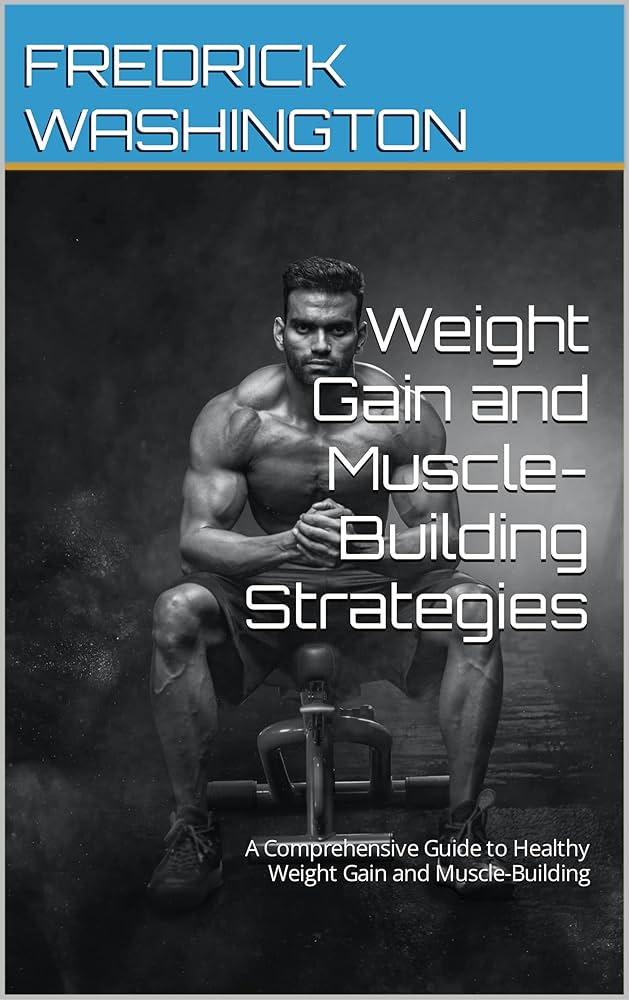Building muscle consistently is a goal shared by fitness enthusiasts at every level, from beginners to seasoned athletes.However, achieving enduring muscle gain requires more than just hitting the gym regularly—it demands a strategic approach that combines proper training, nutrition, recovery, and mindset. In this article, we’ll explore effective strategies that can definitely help you break through plateaus, maximize your muscle growth, and maintain progress over the long term. Whether you’re looking to bulk up, improve strength, or enhance overall physique, these evidence-based tips will set you on the path to consistent and lasting muscle growth.
Table of Contents
- Understanding the Role of Progressive Overload in Muscle Development
- optimizing Nutrition to Support Hypertrophy and Recovery
- The Importance of Rest and Sleep for Sustained Muscle Growth
- Incorporating Periodization to Maximize Long-Term Gains
- Insights and Conclusions
Understanding the Role of Progressive Overload in Muscle Development
Muscle growth fundamentally hinges on the principle of progressive overload,which means gradually increasing the demands placed on your muscles over time. This stimulus encourages muscle fibers to adapt by growing stronger and larger. It’s not merely about lifting heavier weights each session; it also involves manipulating variables such as volume, intensity, and training frequency. For exmaple, you might add sets, increase repetitions, reduce rest periods, or enhance the time under tension—all of which challenge the muscles in new ways, promoting continuous growth.
To effectively implement this approach, consider these key strategies:
- Track your progress: Use a workout journal or app to monitor weights, reps, and sets to ensure consistent progression.
- Periodize your training: Cycle through phases of different intensities and volumes to prevent plateaus and overtraining.
- Prioritize recovery: Muscles need adequate rest and nutrition to repair and grow stronger.
- Focus on compound movements: Exercises like squats, deadlifts, and bench presses recruit more muscle groups and facilitate greater overload.
Optimizing Nutrition to Support Hypertrophy and Recovery
Achieving muscle hypertrophy requires more than just rigorous training; what you fuel your body with post-workout is equally crucial. Prioritizing protein intake within the anabolic window—typically 30 to 60 minutes after exercise—can dramatically enhance muscle repair and growth.Incorporating high-quality protein sources such as lean meats, dairy, or plant-based proteins like lentils and quinoa helps provide the essential amino acids vital for muscle synthesis. Additionally, pairing protein with complex carbohydrates replenishes glycogen stores, supporting sustained energy levels and preventing muscle breakdown.
Beyond macronutrients, micronutrients play a pivotal role in recovery and hypertrophy. Ensuring adequate intake of vitamins like Vitamin D, Magnesium, and B-complex supports muscle function and reduces inflammation.Don’t overlook the impact of hydration, as water facilitates nutrient transport and cellular repair mechanisms. For optimal results, consider incorporating these nutritional strategies consistently:
- Balanced meals with protein and carbs every 3-4 hours to maintain amino acid availability
- Healthy fats from sources like avocados, nuts, and olive oil to regulate hormones linked to muscle growth
- Antioxidant-rich fruits and vegetables to combat exercise-induced oxidative stress
The Importance of Rest and Sleep for Sustained Muscle Growth
muscle growth isn’t just fueled by lifting weights and proper nutrition; quality rest and sleep are basic pillars in the recovery process that ultimately drive hypertrophy. during deep sleep stages,the body initiates the release of growth hormones,particularly human growth hormone (HGH),which plays a crucial role in repairing muscle fibers that are broken down during exercise. Without adequate rest, recovery slows, and the risk of overtraining injuries increases, undermining your muscle gain progress despite rigorous workouts.
Optimizing your sleep routine can be as impactful as fine-tuning your workout regimen. Consider incorporating the following best practices for restorative rest:
- Maintain a consistent bedtime schedule to regulate your body’s internal clock.
- Create a sleep-pleasant habitat free from distractions like excessive light or noise.
- Avoid caffeine and heavy meals close to bedtime to promote easier sleep onset.
- Incorporate relaxation techniques such as meditation or deep breathing exercises before sleep.
embracing these strategies not only enhances muscle recovery but also boosts overall performance, allowing you to train harder and grow consistently over time.
Incorporating Periodization to Maximize Long-Term Gains
To continuously challenge your muscles and avoid plateaus, implementing a systematic variation in your training program is essential. This involves strategically cycling through different phases of intensity, volume, and exercise selection. By doing so, you can optimize recovery, reduce the risk of injury, and push your muscles to adapt and grow over time. Key phases often include hypertrophy-focused higher volume periods, followed by strength-centric lower volume but higher intensity phases, and finally sessions aimed at power development or active recovery.This deliberate fluctuation not only keeps workouts fresh but ensures sustainable long-term progress.
Effectively organizing these cycles requires careful planning. Consider incorporating:
- Macrocycles: broad training goals set over several months.
- Mesocycles: Intermediate blocks lasting a few weeks to focus on specific adaptations.
- Microcycles: Weekly schedules that dictate precise training variables and recovery.
By thoughtfully combining these layers, you create a blueprint that adapts with your evolving strength levels and fitness goals. Consistency becomes not just about effort, but intelligent structure—maximizing gains while minimizing burnout.
Insights and Conclusions
Incorporating effective strategies for consistent muscle gain is a journey that requires patience, dedication, and informed practice. By focusing on balanced nutrition, progressive training, adequate recovery, and smart supplementation, you set the foundation for sustainable growth. Remember,consistency is key—results won’t happen overnight,but with persistence and the right approach,you’ll steadily move closer to your muscle-building goals. Stay committed, listen to your body, and celebrate each milestone along the way.Here’s to your continued progress and strength!

